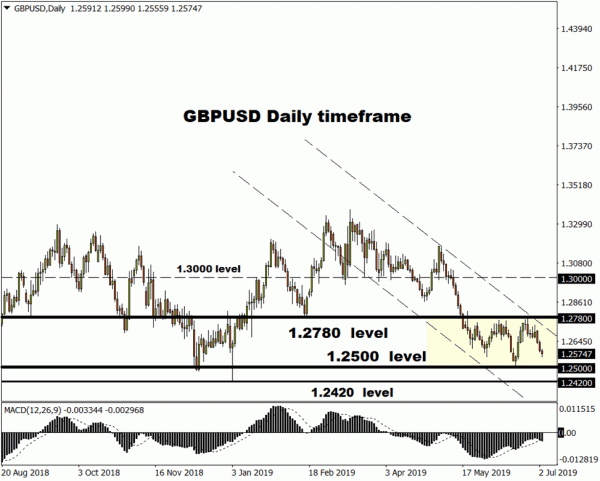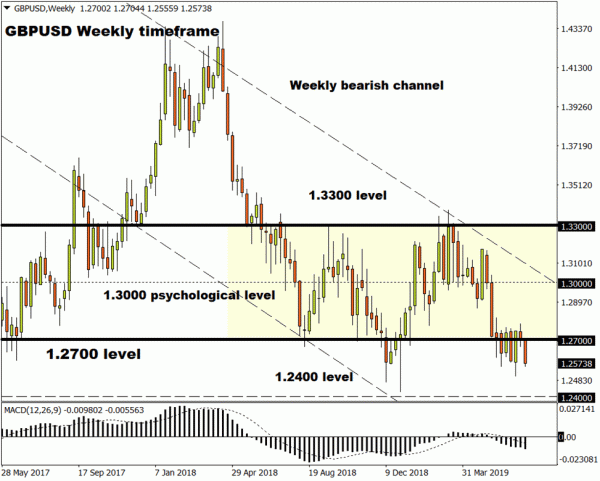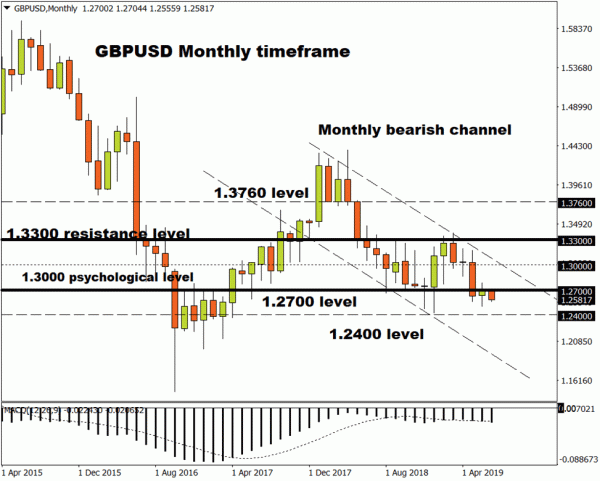If hardline Brexiteer Boris Johnson becomes the next UK Prime Minister and “come what may” leads the United Kingdom out of the European Union on October 31 in a no-deal Brexit, the Pound would likely fall to levels not seen since early 2017 against the US Dollar.
If Brexit pessimism reaches the levels witnessed in the months following the 2016 referendum, the key levels to watch are: the April 2017 low marginally below $1.24, the March 2017 low of $1.23 and even the January 2017 low just under $1.20
Jeremy Hunt seen as “market-friendly” alternative, but won’t change picture for Pound
Standing between Boris Johnson and Number 10 Downing Street is Jeremy Hunt, who is viewed as slightly less committed to a no-deal outcome and is therefore deemed to be more Sterling friendly. Nevertheless, any Pound upside looks capped around $1.28, even if there is another extension beyond the October deadline because it would represent yet another example of kicking the can down the road.
Investors not yet positioned for Johnson to collaborate with EU
It’s important to bear in mind how much negative news has already been priced into the Pound, even if bookmakers’ favorite Boris Johnson gets the keys to Number 10.
This means that investors are yet to position for any possibilities over Johnson willing to work together with the EU, reflecting the mood of the UK Parliament, to agree a smoother Brexit outcome. Offering an olive branch to the EU to encourage stronger collaboration would help bilateral relations with Europe remain beyond Brexit. Unlikely as this may seem, it’s something for investors to consider given the Pound’s weak Q2 performance against the US Dollar when it moved from above $1.31 to $1.25 just over a month later as the prospect of a no-deal Brexit increased.
UK economic data releases to take backseat, but watch the slowing global growth story
Economic data from the United Kingdom will also continue to take a backseat until the prolonged Brexit uncertainty clears up. Unlike many other major economies, GBPUSD – a proxy for the UK economy – has proven less sensitive to global geopolitical issues, such as the US-China trade dispute.
This will remain the case until there is more clarity around Brexit. Don’t ignore the fact that the United Kingdom is also showing signs of Brexit-induced economic weakness. Expectations that the Bank of England will step in with monetary stimulus, likely in the form of lower borrowing costs prevents GBPUSD extending beyond $1.30 anytime soon. Like the rest of us, the Bank of England is playing the Brexit waiting game. The BoE is however more upbeat than central bank peers, where during its June policy meeting it reiterated the consensus view that further rate rises in the UK would likely be required. This view can however change, and can do so suddenly, in the event of a no-deal Brexit.
For the Pound to rise above $1.30 in the current environment, optimism has to gain serious momentum that the United Kingdom is either heading for a much softer Brexit than is currently envisaged, a potential second referendum or, as some optimists still hold hope for, no Brexit at all.

















